“Why would you go to Sedona in August?” That was the question I heard all the time before leading a photography workshop there in 2015. My answer was always, “It’s cooler than Kansas City!” Since then I’ve wanted to return to lead another trip, and finally did last month. This time, however, it wasn’t cooler than Kansas City. But it was more scenic, and still well worth it.
Summer is the off-season in Sedona, so despite all it there is to see and do, it’s relatively uncrowded. At 4300-ft altitude, the summers are cooler than most of AZ (and usually KC), and get regular thunderstorms. This trip we had rain at times (mostly overnight), which, while bringing some humidity, also offered us some great reflection opportunities (more on that below) as well as great skies and occasional lightning.
I’ll let the photos and stories, below, tell you more about the trip. And if you’re interested in joining me when I return next year, let me know.
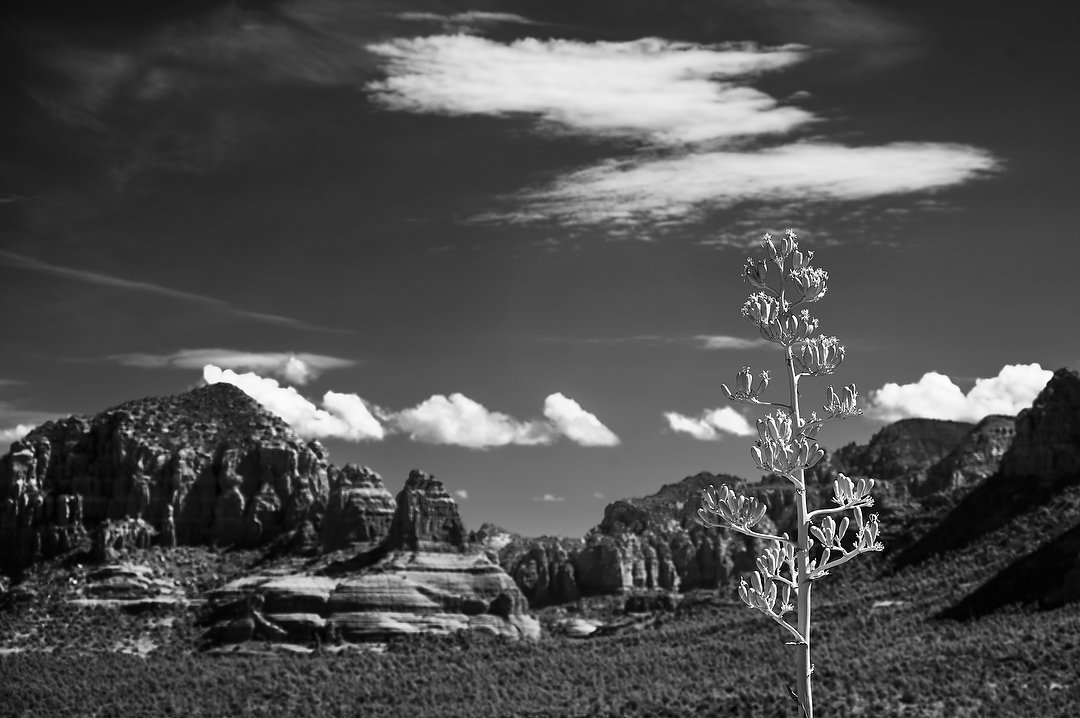
On the first morning of the workshop I took the group to a parking area along the Red Rock Scenic Byway outside Sedona. I knew that once we followed the trail up a short distance we’d find some open views, and have an opportunity to incorporate foreground elements. That’s just what I did here, making an infrared black-and-white. You can read about how and why I had that conversion done in this blog post. Full spectrum Nikon Z 6, Aperture Priority, Preset white balance, ISO 100, 1/500 at f/8 in Matrix metering, +1.3 EV, Nikkor Z 24-200mm f/4-6.3 VR lens at 74mm.
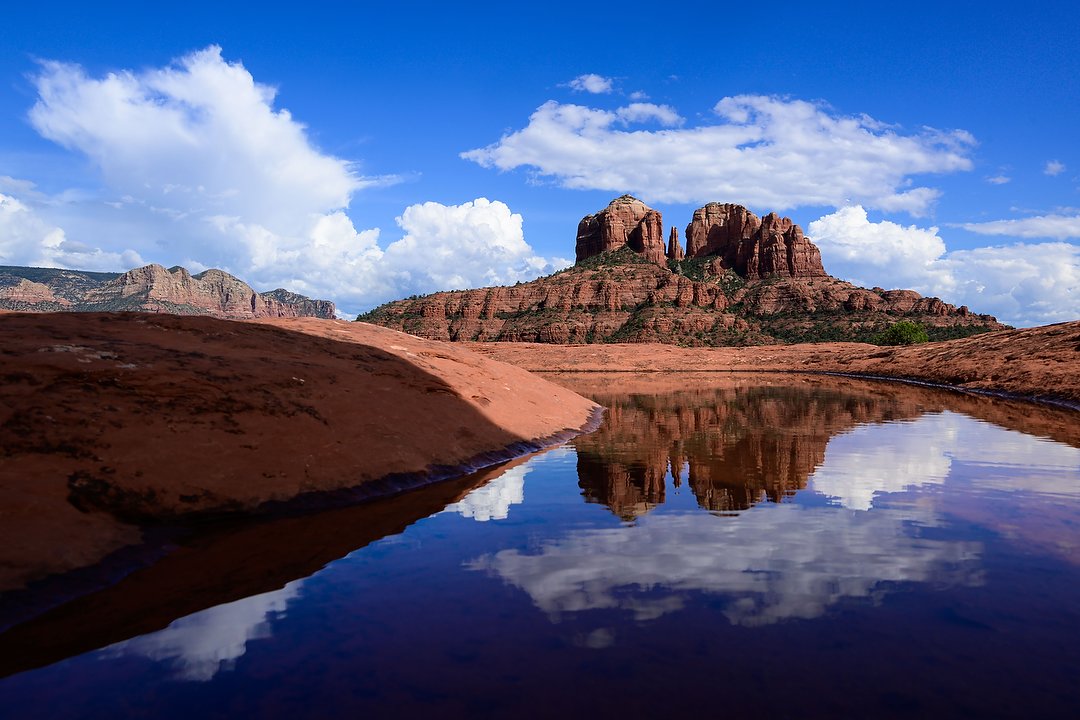
With off and on rain, I’d hoped this location would work well for reflections. It didn’t disappoint. The best reflection photos are made if the reflection itself is in shadow. I came prepared to make that happen. Nikon Z 9, Aperture Priority, Sunny white balance, ISO 64, 1/100 at f/13 in Matrix metering, -0.3 EV, Nikkor Z 24-200mm f/4-6.3 VR lens at 24mm.
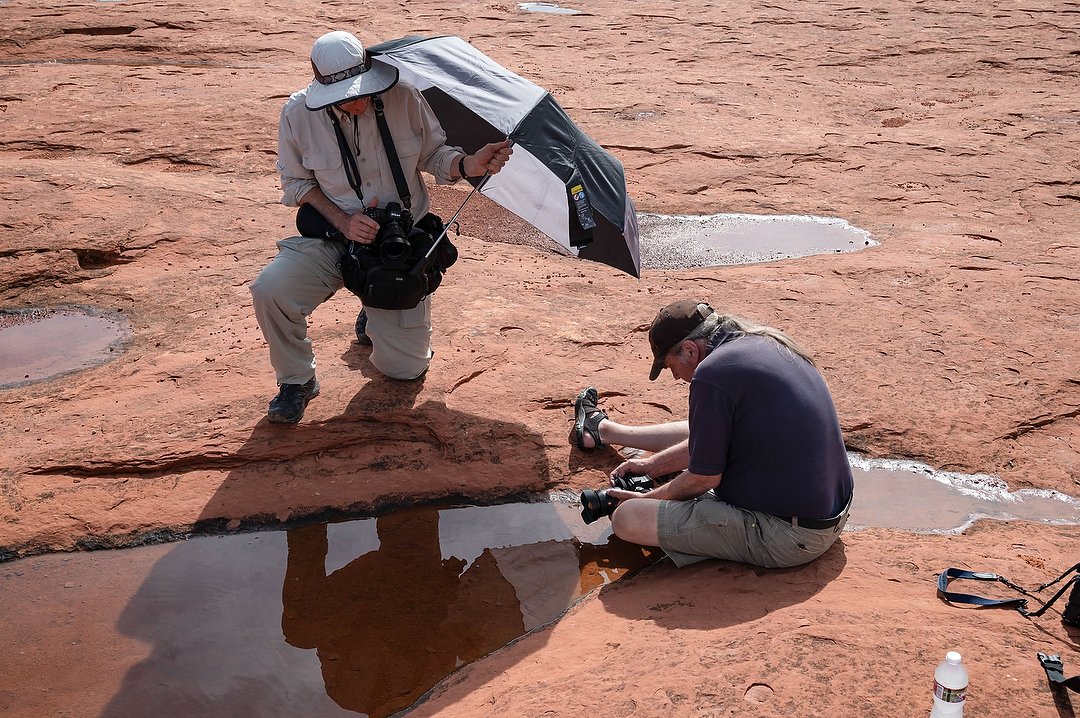
Here’s the secret to putting that reflection in shadow. Despite being a sunny day, I brought along a large umbrella to create the shadow, which is just what I’m doing here.
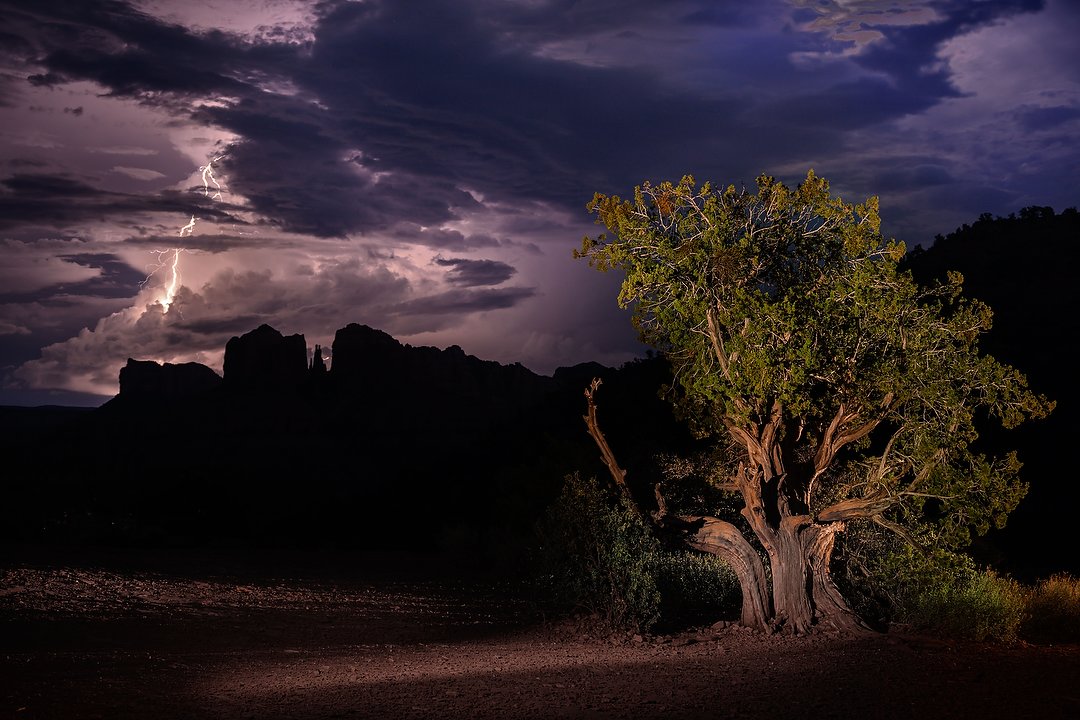
This was a spot I visited on a previous trip, and had hoped it would be a good sunset location and lead into a light painting session. We got skunked on sunset, but were treated to a lightning storm in the distance. After setting up the lights (a pair of Lume Cubes) I used the intervalometer feature on my camera to have it keep shooting while I helped the rest of the group with their cameras. Nikon Z 9, Manual exposure, Sunny white balance, ISO 200, 15-seconds at f/5.6 in Matrix metering, -0.7 EV, Nikkor Z 24-200mm f/4-6.3 VR lens at 54mm.
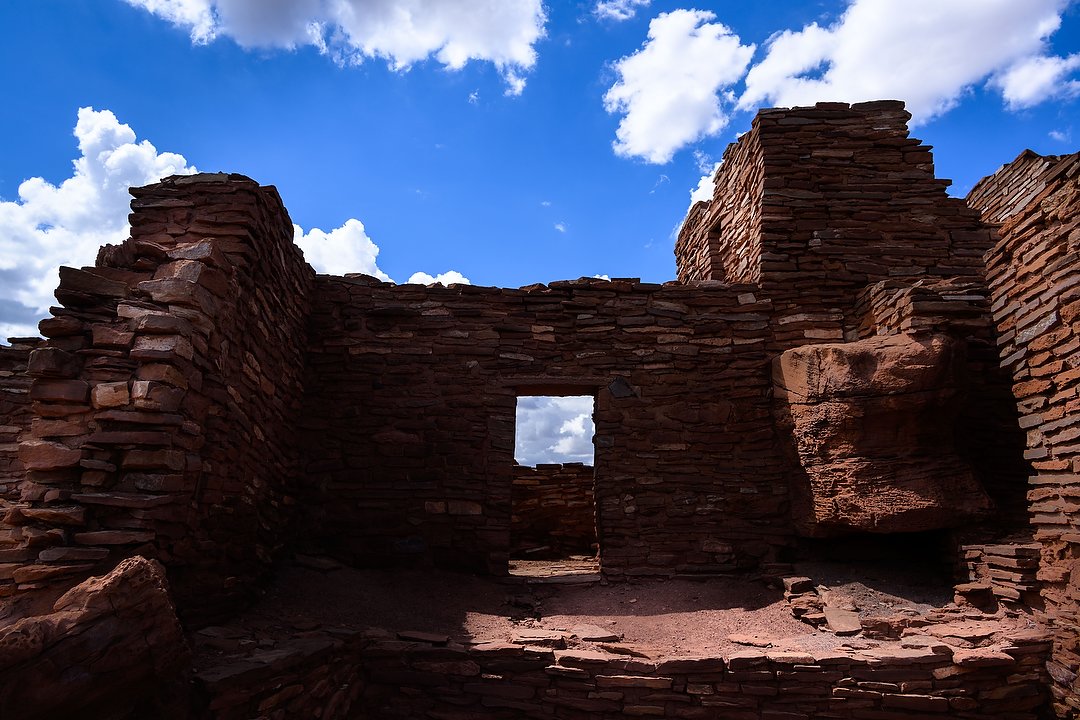
Wupatki National Monument has a number of large Native American ruins, and it’s on the way to the Grand Canyon, which made it a natural stop for us. Nikon Z 9, Aperture Priority, Sunny white balance, ISO 64, 1/100 at f/10 in Matrix metering, -1.3 EV, Nikkor Z 24-200mm f/4-6.3 VR lens at 24mm.
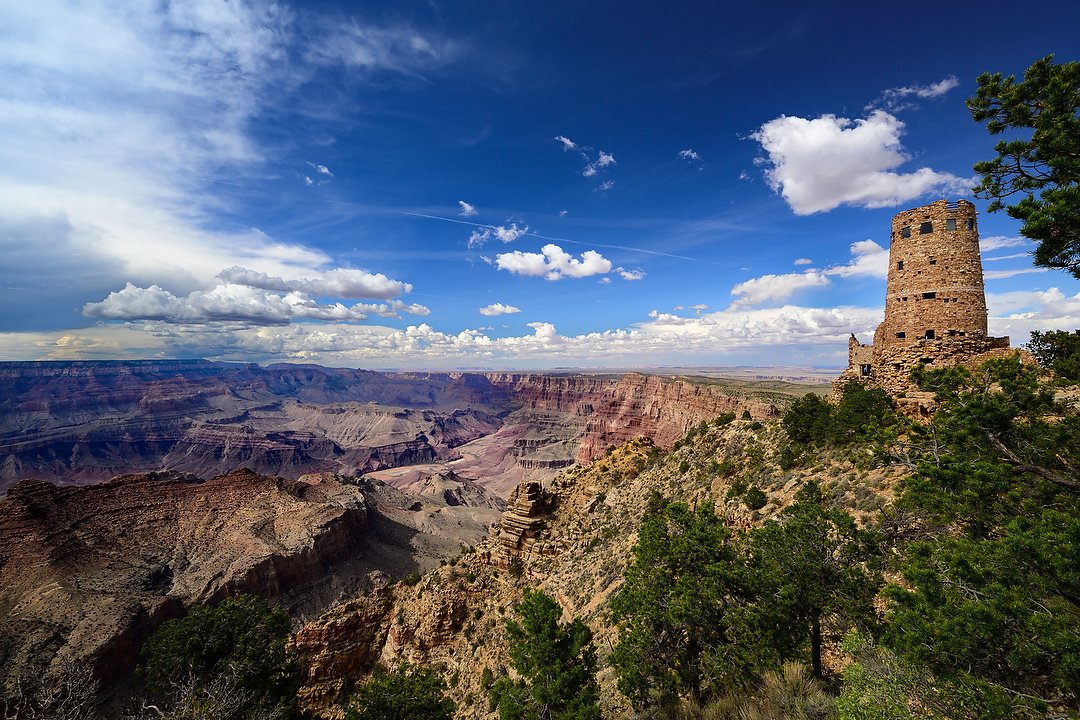
On the second day we drove up to Grand Canyon National Park to shoot through afternoon and evening. Since the afternoon’s forecast called for clouds building into solid cloud cover, I made a last-minute decision to stop at Desert View Watchtower as we entered the park. The trick there was finding an angle that shows the tower but not the crowds of tourists. Nikon Z 9, Aperture Priority, Sunny white balance, ISO 125, 1/100 at f/11 in Matrix metering, -0.3 EV, Nikkor Z 14-30mm f/4 S lens at 15mm.
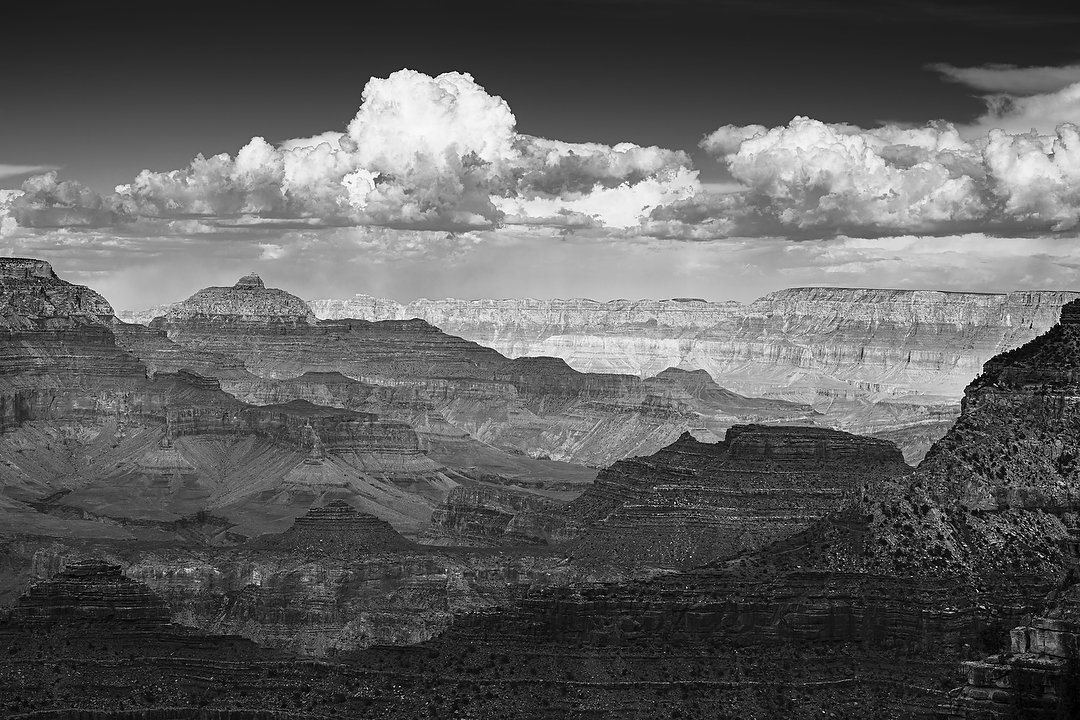
The clouds did keep the sun from the canyon that afternoon, with the only strong light far off in the distance. With the lack of much color, I opted to shoot black-and-white. Nikon Z 9, Aperture Priority, Sunny white balance, ISO 64, 1/125 at f/10 in Matrix metering, -0.7 EV, Nikkor Z 24-200mm f/4-6.3 VR lens at 64mm.

We spent one morning exploring the trails at Red Rock State Park. I always remind people that not all photos are big, wide landscape shots. Sometimes the little things also tell the story, like this tarantula we came across. Nikon Z 9, Aperture Priority, Sunny white balance, ISO 2000, 1/160 at f/6.3 in Matrix metering, -0.3 EV, Nikkor Z 24-200mm f/4-6.3 VR lens at 165mm.
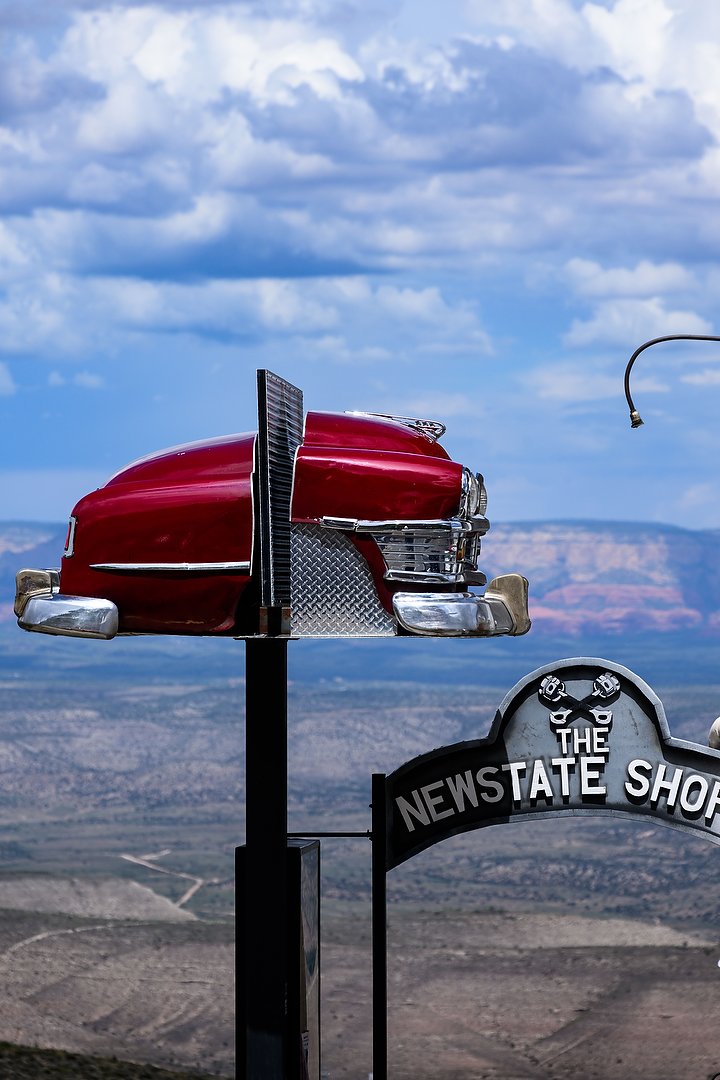
After a nice lunch at the Haunted Hamburger in Jerome the third day, we came across this interesting scene on the walk back to the vans. Nikon Z 9, Aperture Priority, Sunny white balance, ISO 200, 1/1000 at f/8 in Matrix metering, +0.3 EV, Nikkor Z 24-200mm f/4-6.3 VR lens at 175mm.
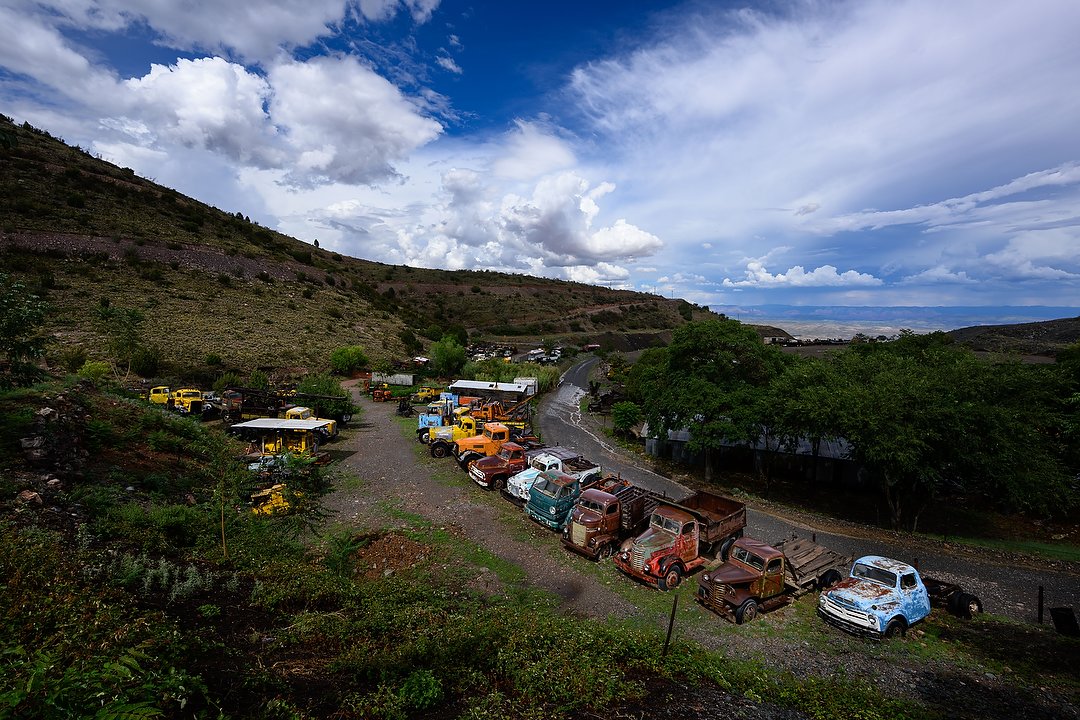
One of my favorite spots in the Sedona area is the King Gold Mine in Jerome. After a short rainstorm, the sun started poking through again, lighting up this curved line of trucks leading to a beautiful sky in back. Nikon Z 9, Aperture Priority, Sunny white balance, ISO 64, 1/250 at f/8 in Matrix metering, -0.7 EV, Nikkor Z 14-30mm f/4 S lens at 16mm.
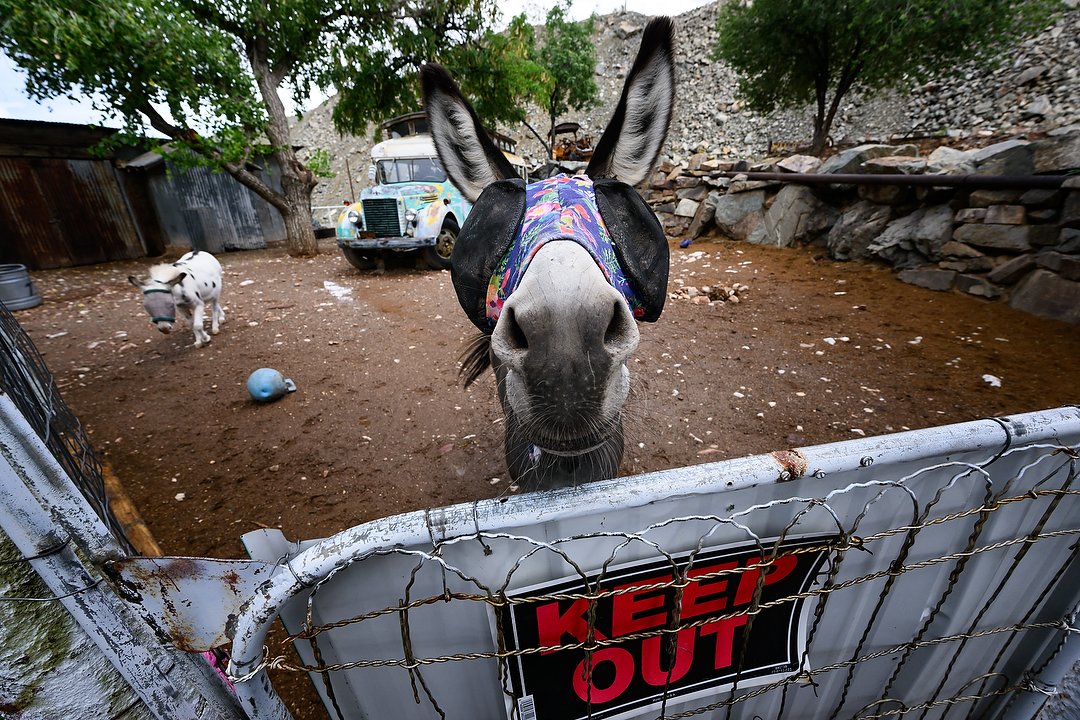
A salvage yard which was turned into a tourist attraction, it’s full of great opportunities for photographers. That includes a paddock with a couple of friendly mules. Nikon Z 9, Aperture Priority, Sunny white balance, ISO 400, 1/640 at f/8 in Matrix metering, -1.0 EV, Nikkor Z 14-30mm f/4 S lens at 14mm.
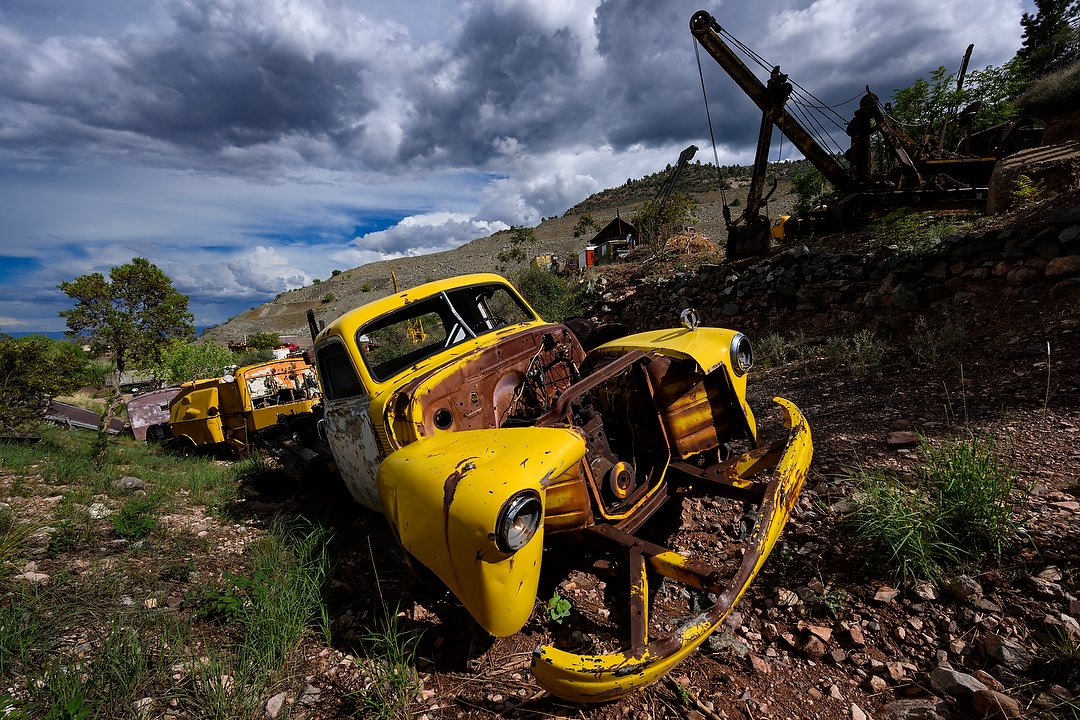
As the sun started punching through the threatening sky, I hunted for a colorful foreground subject to put in front of it. Mission accomplished. Nikon Z 9, Aperture Priority, Sunny white balance, ISO 100, 1/320 at f/11 in Matrix metering, -0.7 EV, Nikkor Z 14-30mm f/4 S lens at 15mm.
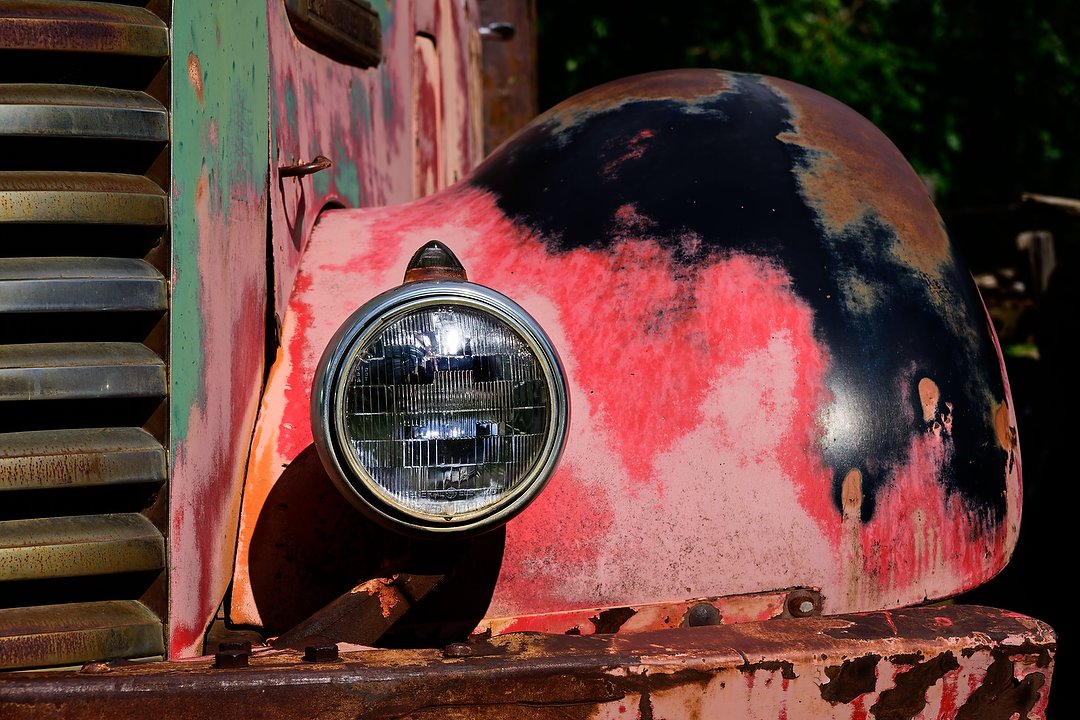
Composition is all about careful framing. Finding this mix of color and rust at the King Gold Mine, the challenge then was choosing what to show, or perhaps more importantly, what not to show. Nikon Z 9, Aperture Priority, Sunny white balance, ISO 100, 1/400 at f/10 in multi-segment metering, -0.7 EV, Nikkor Z 24-200mm f/4-6.3 VR lens at 101mm.
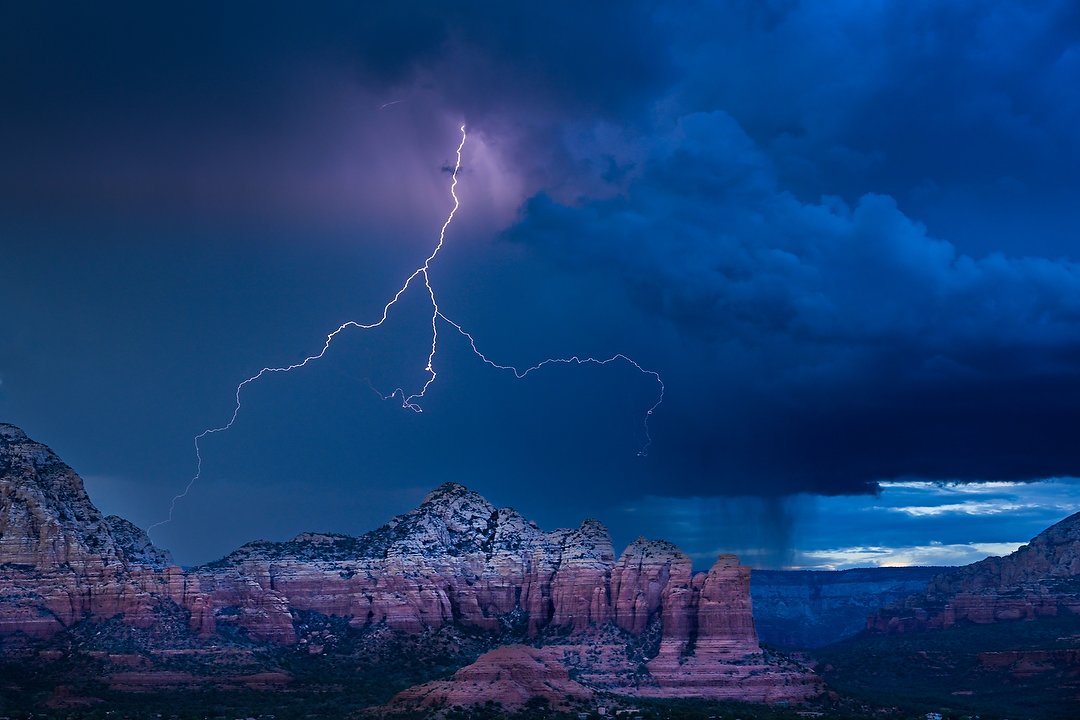
On our way back to Sedona later that day, we stopped at Airport Mesa hoping for a nice sunset. Instead, we were treated to a lightning storm. The challenge photographing lightning in the daytime is that by the time you see the lightning and press the shutter button, you’ve missed the bolt. At night you can use a time exposure (what I did with the earlier photo of lightning). In this case, I was able to take advantage of the Nikon Z 9’s Pre-release feature. You can read about that in this blog post. Nikon Z 9, Aperture Priority, Sunny white balance, ISO 500, 1/60 at f/8 in Matrix metering, -1.0 EV, Nikkor Z 24-200mm f/4-6.3 VR lens at 65mm.

One of my favorite trails in Oak Creek Canyon, north of Sedona, is the West Fork. Near the start of it you pass through an early white settler’s orchard, where I chose to again use my infrared camera. Nikon Z 6 converted to full spectrum, Aperture Priority, Preset white balance, ISO 100, 1/100 at f/13 in Matrix metering, +1.3 EV, Nikkor Z 14-30mm f/4 S lens at 18mm.
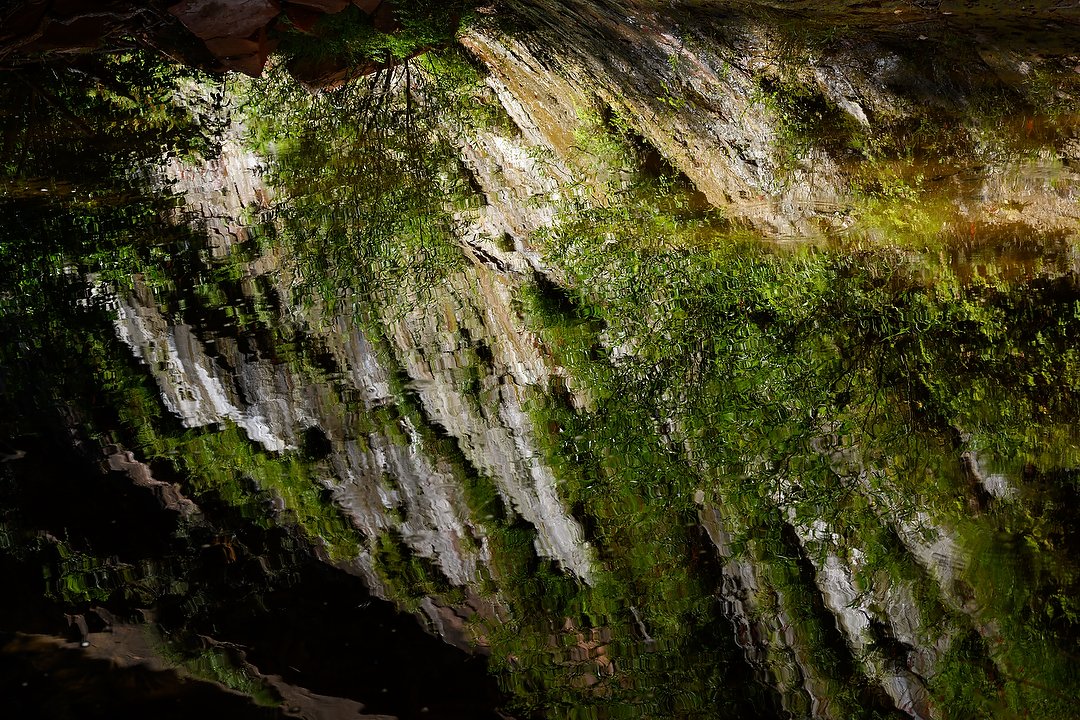
The trail leads you in to Oak Creek, and then follows it for a distance. There wasn’t much light along the trail, so I looked for reflections on the water. Nikon Z 9, Aperture Priority, Sunny white balance, ISO 200, 1/160 at f/8 in Matrix metering, -0.3 EV, Nikkor Z 24-200mm f/4-6.3 VR lens at 67mm.
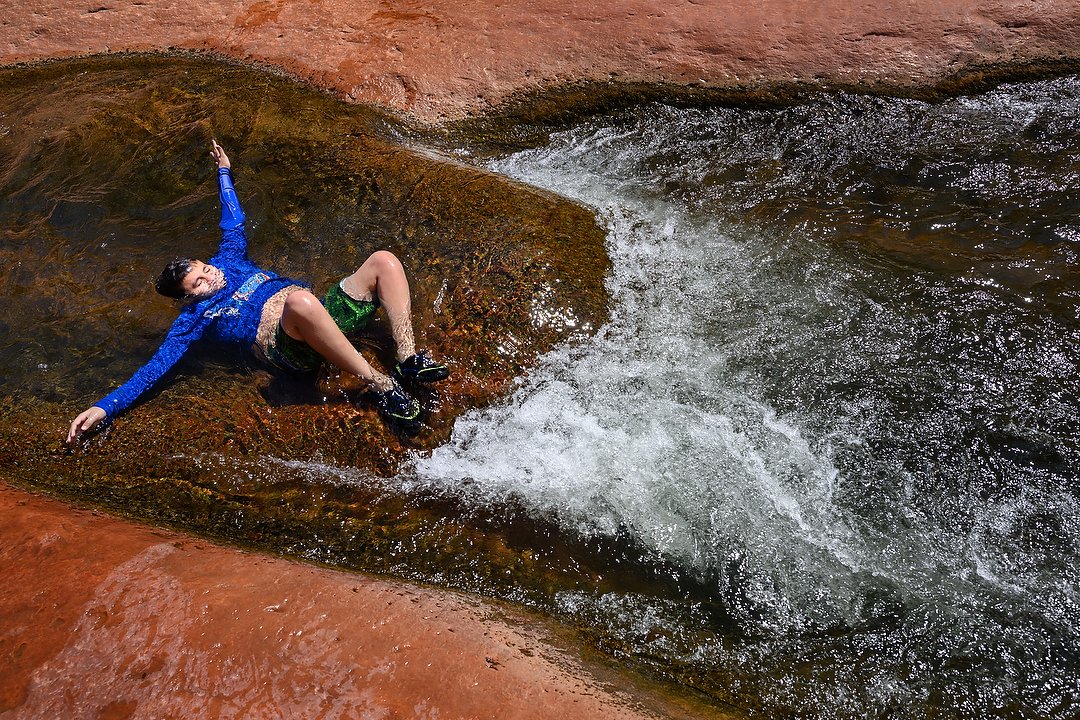
When visiting Slide Rock State Park, it’s easy to see how it got its name. I always remind my groups that they want to tell a story of their trip in photos, and sometimes other people are part of that story. Nikon Z 9, Aperture Priority, Sunny white balance, ISO 200, 1/800 at f/8 in Matrix metering, -0.7 EV, Nikkor Z 14-30mm f/4 S lens at 22mm.
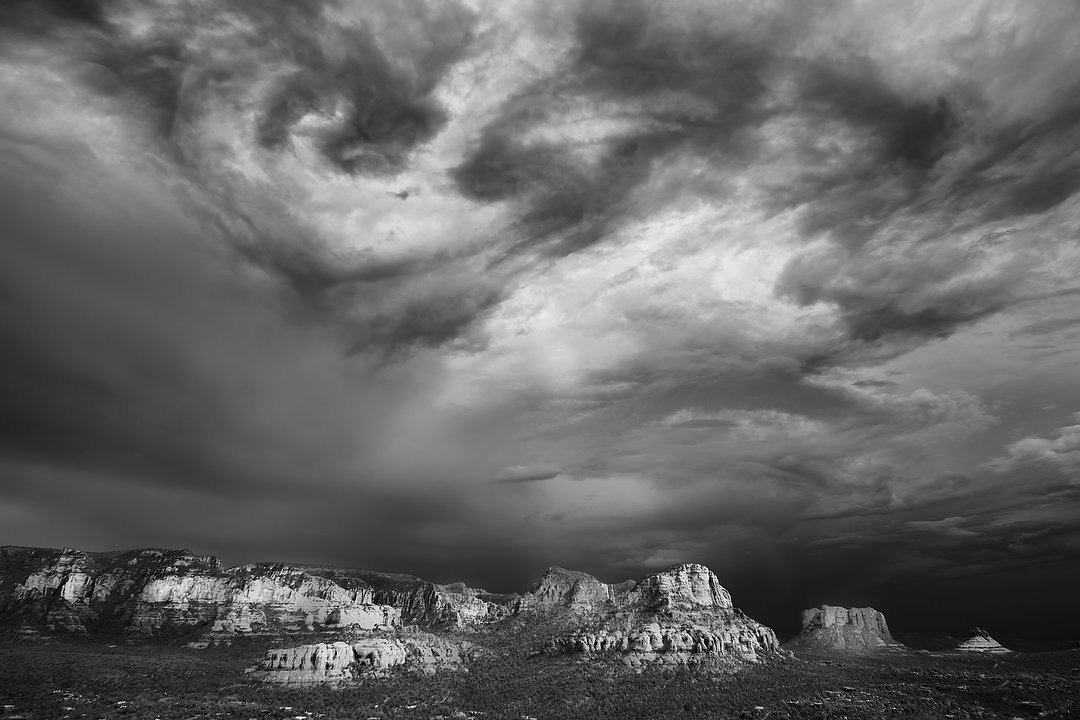
Our final evening didn’t have much of a sunset, but did offer some dramatic clouds. Once again I chose to use the infrared converted camera to work with that. Nikon Z 6, Aperture Priority, Preset white balance, ISO 100, 1/160 at f/9 in Matrix metering, +2.7 EV, Nikkor Z 24-200mm f/4-6.3 VR lens at 24mm.
(If you like this story, please share it with your friends and let them know about the links on photography that I post on my business Facebook page. I’m also on Instagram and Twitter, @reedhoffmann. And if you’re curious about the workshops I teach, you can find them here. And, you can subscribe to this blog on my home page.)

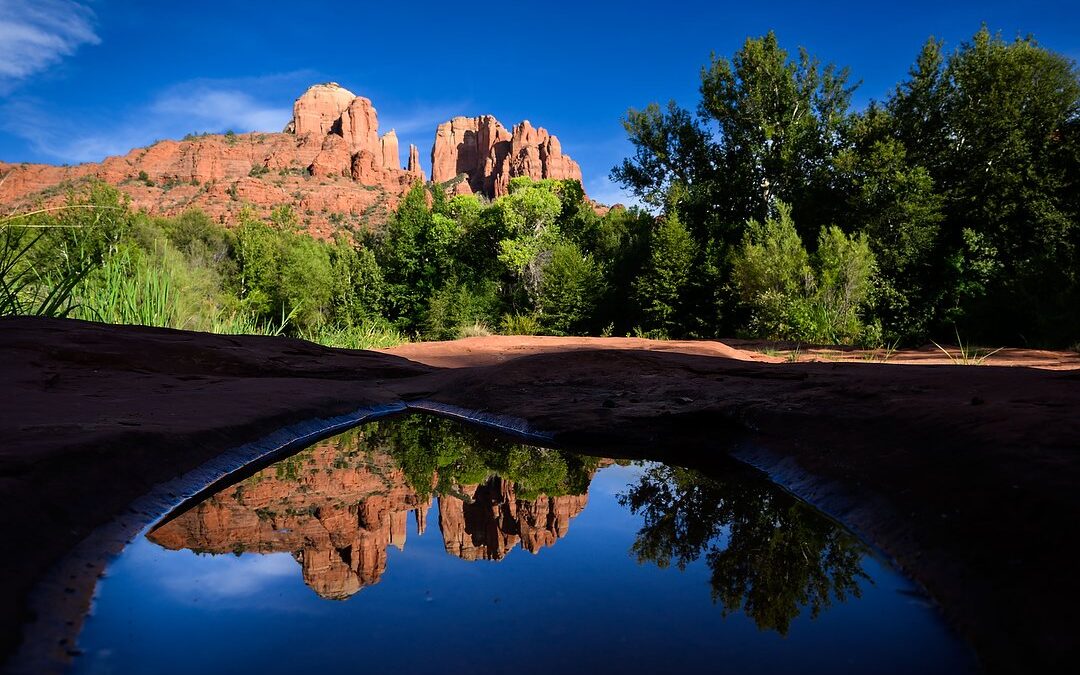
Thanks Reed. Great story, great photos and a great workshop!
Always great to have you along Norm, see you again soon!